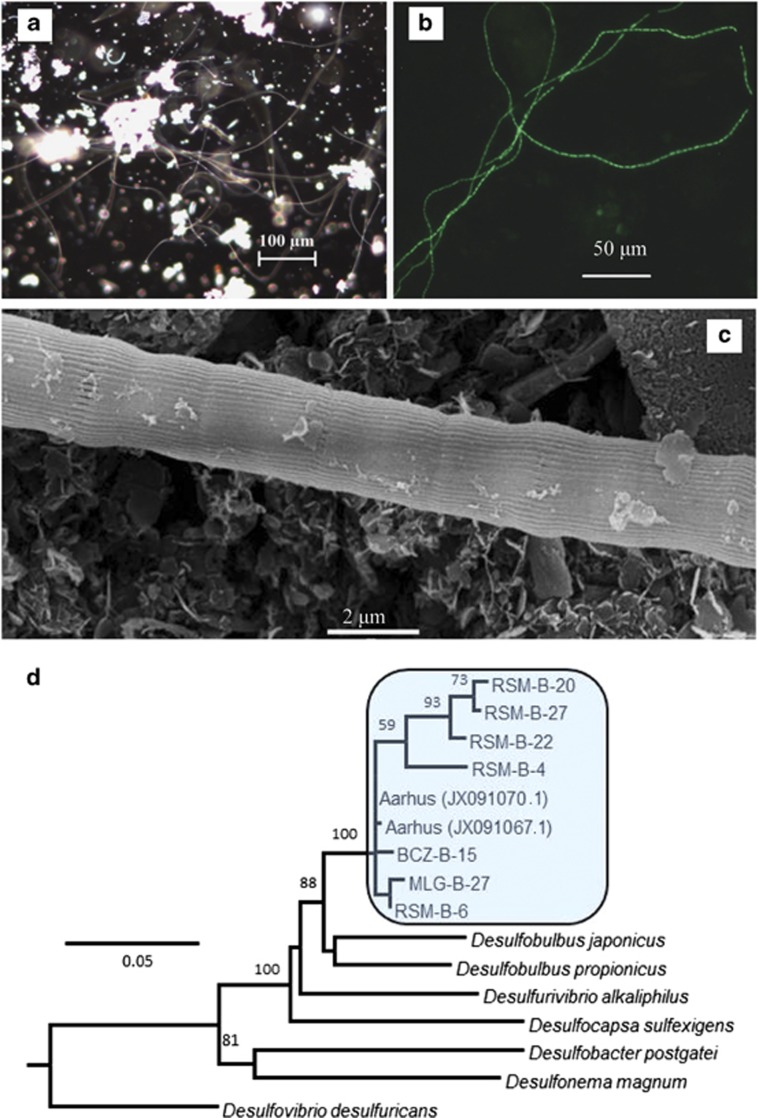Correction to: The ISME Journal (2014) 8, 1843–1854; doi:10.1038/ismej.2014.41; published online 27 March 2014
Since the publication of this article, the authors have identified an error within Figure 2, namely that two accession numbers for the clones in panel d (a phylogenetic tree) were incorrect.
Figure 2.
Identification of filamentous Desulfobulbaceae bacteria present in intact sediment from sites described in Figure 1 and Table 1. (a) Abundant long filamentous bacteria taken from near the surface of sediment and gently teased apart with forceps. (b) Identification of the filaments belonging to Desulfobulbaceae using CARD–FISH (DSB 706 probe). (c) SEM image of a bacterial filament isolated from the sediment. All images shown here are from MLG. See Supplementary material for images from RSM and BCZ. (d) Phylogenetic tree of Desulfobulbaceae 16S rRNA sequences recovered from intact sediment described in Figure 1. Closely related sequences of filamentous. Desulfobulbaceae from Aarhus Bay and other isolated bacteria are also included. Scale bar shows 5% sequence divergence and bootstrap support is indicated on tree branches.
The correct accession numbers are Aarhus (JX091070.1) and Aarhus (JX091067.1), and the correct figure is shown below.
The Authors would like to apologise for any inconvenience this may have caused.



